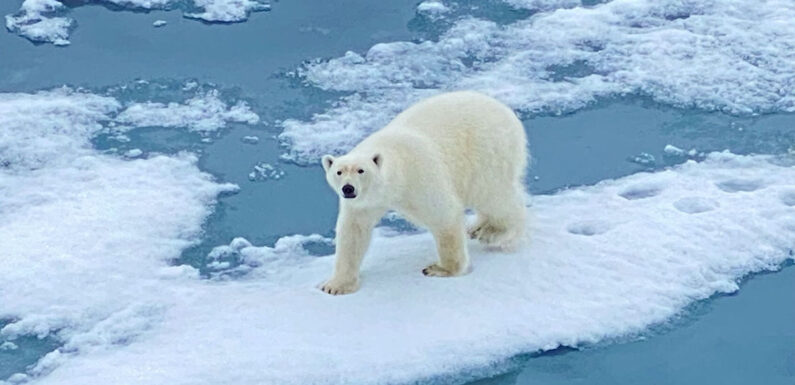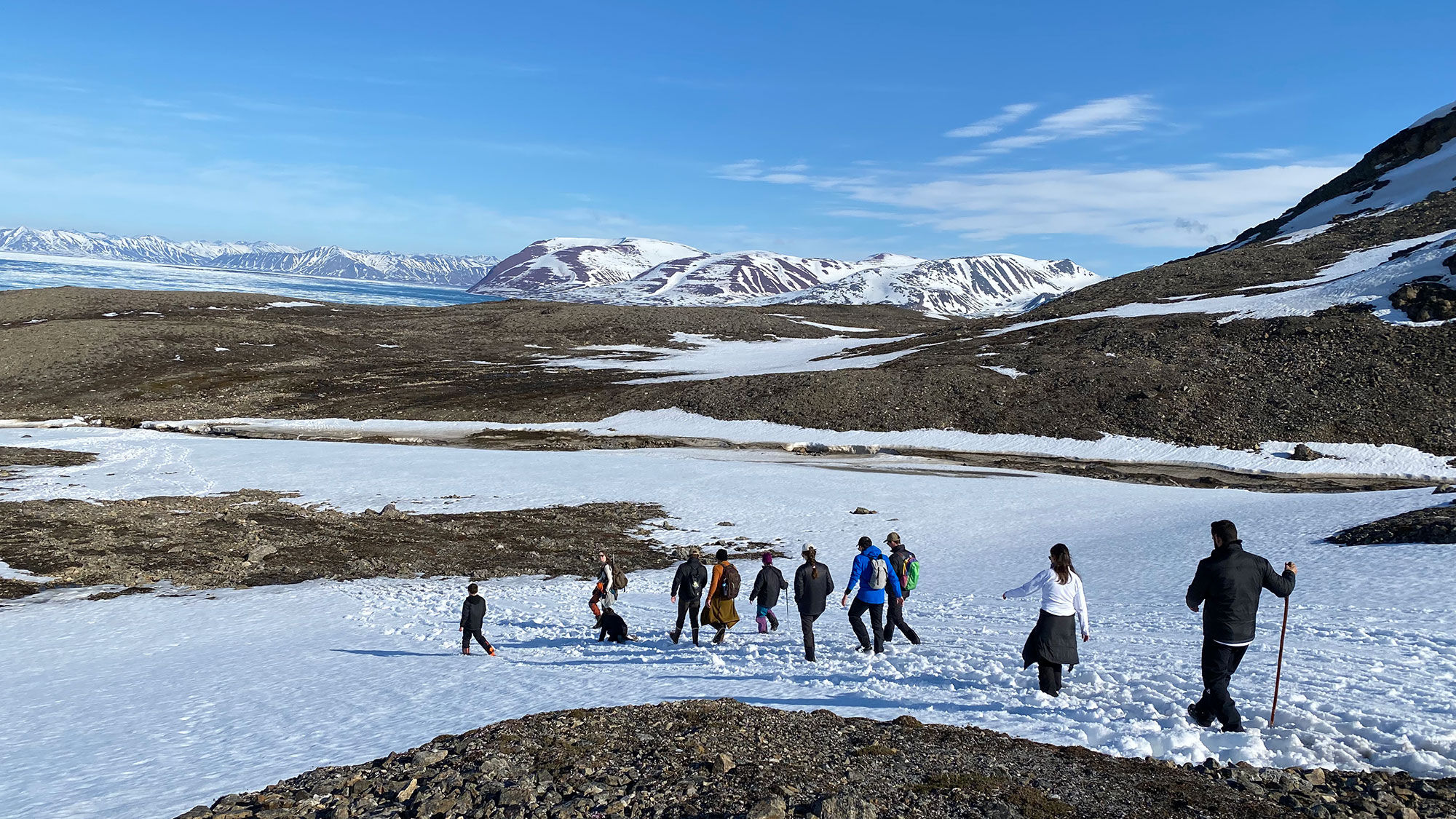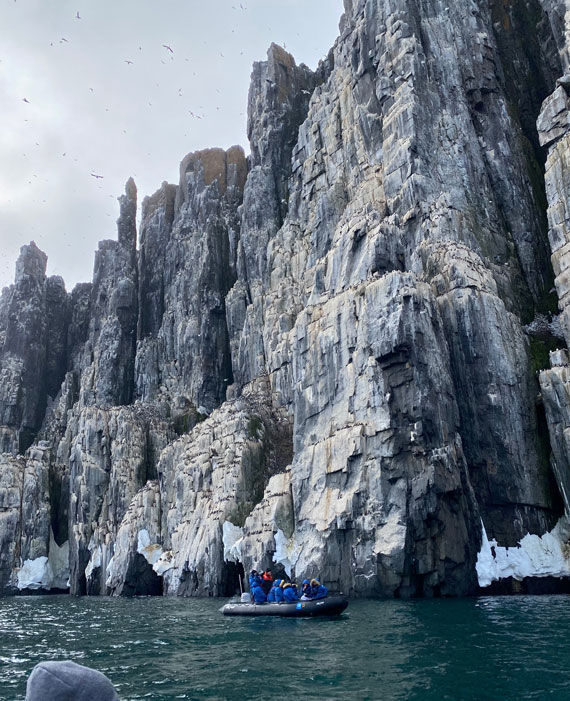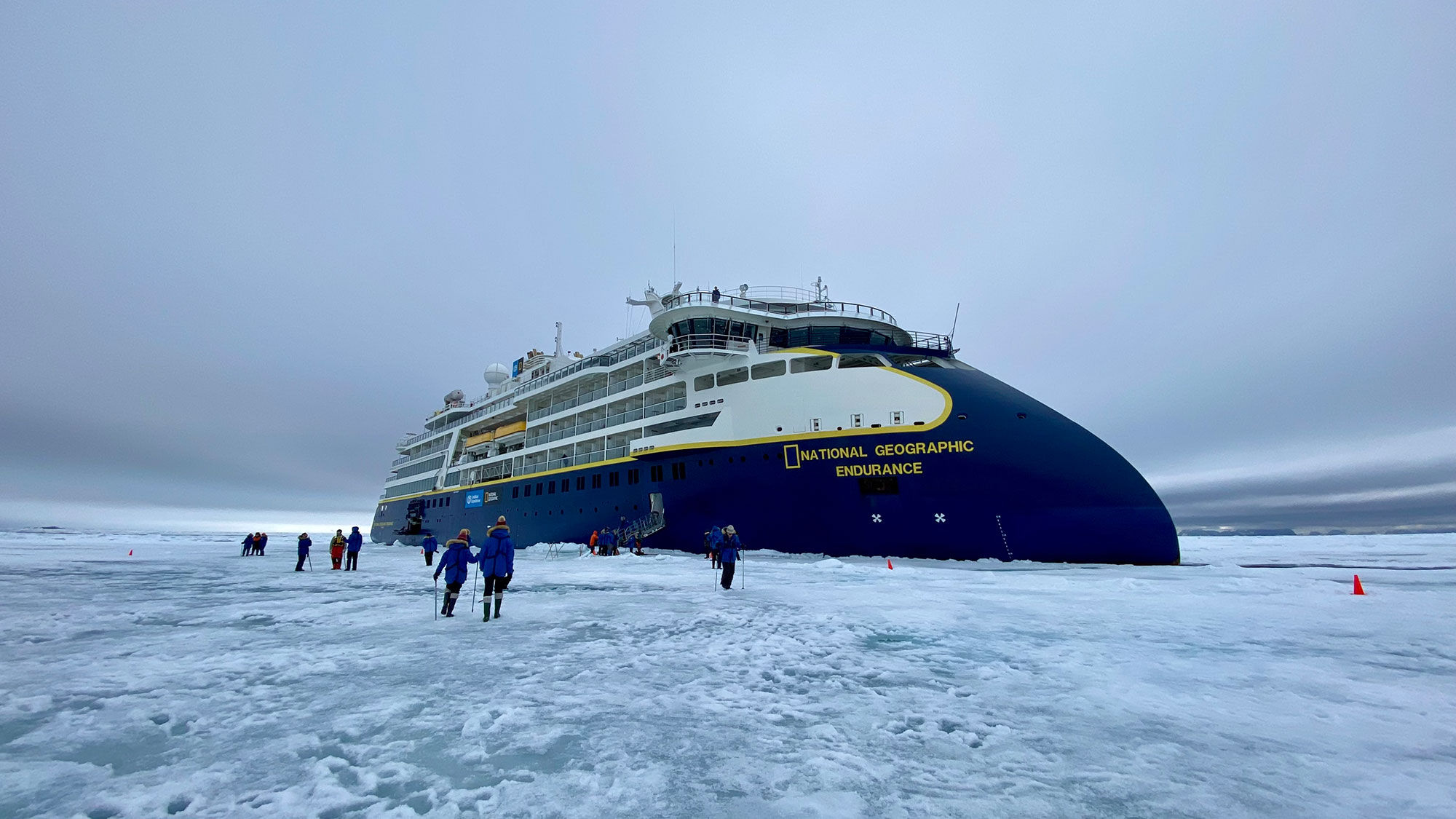
SVALBARD, Norway — On the National Geographic Endurance’s daily program for June 26, the morning and afternoon activities were listed as “Who knows” and “Anything can happen.”
It was entirely accurate. Guests on this Lindblad Expeditions ship sailing in the Arctic have learned that there is no telling what the day will have in store. Such is life on an expedition cruise, as weather and wildlife can’t be controlled. Luckily, both elements have been more than cooperative.
The 6 a.m. wakeup call on our second morning came when a mother polar bear and her cub were spotted playing in the ice off a rocky spit. The ship slowly approached them, and guests could observe them from the deck for more than an hour before heading to breakfast.
That would have been an exceptional day’s polar bear sighting, but it was topped by the young male spotted on pack ice later that afternoon. He was as curious about us as we were him, and he wandered so close to the Endurance (10 feet from the hull) that many of the naturalists called it an extraordinary encounter.
On the bright and sunny third day, nature didn’t entirely cooperate. A kayak outing was thwarted because two polar bears were spotted swimming in the fjord where the ship had docked. Guests were instead treated to a Zodiac ride, keeping a healthy distance from the bears, which swam back and forth to the shore. One tried to break into a trapper’s cabin that also had been on our intended route that morning.
The unpredictability of weather and nature add to the sense of adventure, and the word “intention” is oft-used. Stefano, or Stef, the expedition leader, made sure to let passengers know from Day 1 that he would state the ship’s intentions every day. Which he has.
Part of being on a Lindblad ship is knowing that the captain has the freedom to go where he and the crew think the guests will have the best experience. According to Capt. Aaron Wood, the company is not measuring fuel or asking its ships to keep any schedule. Lindblad trusts its crew to figure out the best route that week as the cruise develops. It’s a balance of reading ice reports, looking at satellite photos and using the collective knowledge of the experienced crew.
On an itinerary called Land of the Ice Bears, seeing five polar bears in the first three days certainly had the ship buzzing. But there was more. A blue whale on the first night and several minke whales, including one that popped up just outside the dining room windows at dinner. There were two days of close encounters with walruses, both on land and in the water.
Due to the changing ice conditions in late June and the Endurance’s ability to cut through ice that other ships can’t, our group was on the ship when it became the first vessel to reach the bird cliffs of Alkefjellet this season. Famous among birders, tens of thousands of Brunnich’s guillemots nest on soaring cliffs. Shrouded in fog at their peaks, the cliffs looked like something out of the Lord of the Rings.
The potential for fallen chicks or loose eggs makes the cliffs a prime location to spot an Arctic fox, and the one we saw was the second fox sighting of the week.
As impressive as the wildlife is, so is the ice, which changes daily (guests soon learned the difference between pack ice and fast ice). It was easy to spend hours watching the ship cut through the sheets and chunks of ice in their various stages of white and blue. Seeing a glacier calve from a not-too-far distance on a Zodiac was thrilling.
It’s important to understand just how advanced the Endurance is, and how that impacts guest experience. Built by Norwegian shipbuilder Ulstein, the Endurance debuted in 2021 as one of two new ships purpose-built for polar sailing. Its extra-strong hull enables the ship to cut through ice fields that many ships can’t.
The Endurance’s polar class rating of PC 5 Category A is above most other expedition cruise vessels. According to the captain, when passengers on other ships see how fast he is taking the vessel through certain areas, they mistakenly think there must be no ice. The ship’s Azipod thrusters can rotate 360 degrees and give the vessel far more maneuverability, which comes in handy when the ship needs to navigate through thick ice and may have to change direction.
The ship’s strength and maneuverability allows for one of the itinerary’s highlights: the moment when the ship seems to get stuck in a sheet of pack ice. Some worried guests wondered how we’d back out.
Soon after, a side door on the side of the ship popped open and the expedition team began wandering around the ice, making sure it was stable enough for an ice walk. It was, and as some guests made snow angels, others just took the opportunity to walk on an ice sheet above the arctic waters below. Everyone snapped pics of the ship seemingly embedded in ice.
Source: Read Full Article












